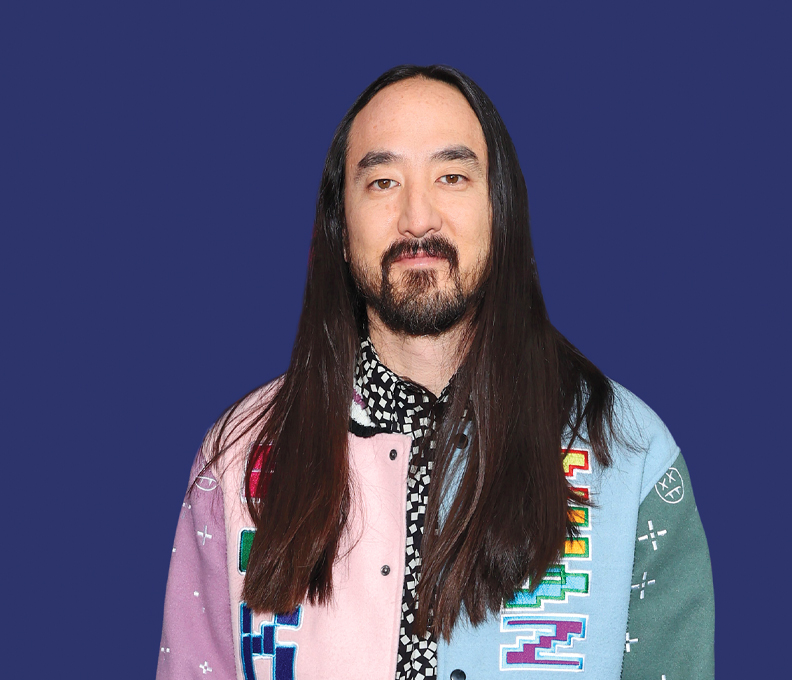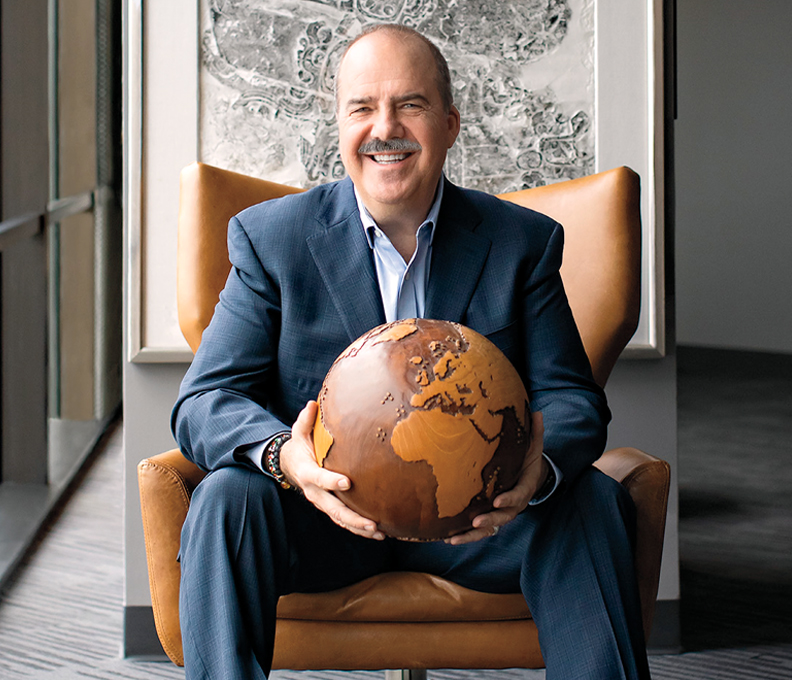George Yabu and Glenn Pushelberg: The Go-to Designers for Big-Brand Five-Star Hotels
At any given time, there are dozens of Yabu Pushelberg projects in progress
May 22, 2023

George Yabu and Glenn Pushelberg / Illustration: Señor Salme
You’ve almost definitely stayed at a hotel designed by George Yabu and Glenn Pushelberg. Maybe it was The Londoner in Leicester Square, or the Edition or Pan Pacific in the same city. Perhaps it was The St. Regis Mexico City, the Four Seasons Toronto or Park Lane in New York. They are the absolute go-to designers for big-brand five-star hotels, and as tirelessly inventive as their work is ubiquitous.
The Toronto- and New York-based design studio Yabu Pushelberg, founded in 1980, is all about weaving a fresh narrative with each new project, and its founders talk in extraordinary depth about each story they are telling. Park Lane was a refurb of a 1971 landmark, with bright colors running through the interior, purposely matched to Pantone codes from the original era. “When we were working on The Londoner,” says Yabu, “we thought about how the city itself had developed as a series of hamlets that became connected, and the history of its members clubs. We reflected that in terms of the way we structured the spaces, with secret areas to discover for guests.”
At any given time, there are dozens of Yabu Pushelberg projects in progress, including the new Park Hyatt resort in Los Cabos, Mexico, which has been ten years in the making. “We have finished 66 hotels so far,” they chime together by Zoom from their apartment in New York. “But we might be missing a few.” Currently under development: interiors for a JW Marriott Tokyo and ground-up projects for Aman and its new Janu brand, as well as for Raffles.
They call their work, elevating often modest woods alongside fine leather and marble, “high humble.” You have to add “prolific,” too. At last year’s Salone del Mobile, they launched nine different products for seven different brands. They have put their name to sofas, lamps, marble bathtubs, taps and mirrors. Each new project is about innovation or reinvention, but also subtlety. “We want you to feel a certain way, and not necessarily notice something instantly in one of our spaces,” says Pushelberg.
They are best known for creating luxurious, functional city hotels. It’s difficult to think of a better example than the Park Hyatt Bangkok: From the spot where your car drops you off to the sculptural shapes running overhead through bright spaces, it’s as functional as it is visually pleasing. The building is connected by elevator to one of the best shopping and dining malls in the city—crucial for a capital with such aggressive humidity.
Their Park Hyatt in Mexico represents a new chapter for Yabu Pushelberg—a holiday resort—but again it’s all about narrative and working out how to move around and use the space. “It’s one of the best-suited five-star brands for wanted to disperse elements away from each other, so you discover things to each side. There’s a lot of inspiration from Mexican modernist architecture, about framing views and the landscape. The country was really driven in terms of modernism by the Olympics in 1968.”
Many of their projects on the drawing board are weighed down by NDAs, but Pushelberg speaks excitedly about a current one that offers both obstacle and opportunity: “We are working on something that has ‘tropical’ in the name, but it’s not in a tropical environment, so we’ve come up with a 15-foot-wide zone that surrounds the space, like a wooden box, with foliage and the smell of earth and grass. We want to create an immediate sense of a jungle.”
Another of their new city projects is a W in Milan, which is also going to serve as a reboot for the brand and sees Yabu Pushelberg coming full circle. Their breakthrough project was the W Times Square in 2001. “With the new Milan project, we see it as an opportunity to revive the W brand,” says Pushelberg. “We are doing something with a touch of mystery and art to it. It’s about Milan being a fashion capital, but without being obvious about that in the design.”
From the subtle patterns in a handwoven rug to the striking comfort of an armchair and the placement of a workspace in a suite, the Yabu Pushelberg city hotel is all about creating a good mood, and one that won’t date. “You need to feel like you’re in a place with your own tribe, and that where you are suggests you’ve made a success of your life,” says Pushelberg. “It has to be a moment of joy.” Yabu sums it up his own way: “When I close my eyes in one of our hotel rooms, I want to feel like I’m at home. I need to feel transported the minute I close the door to my room. I need to get ready for my big three meetings in a row. It’s all about shit, shower, shave and showtime.”



